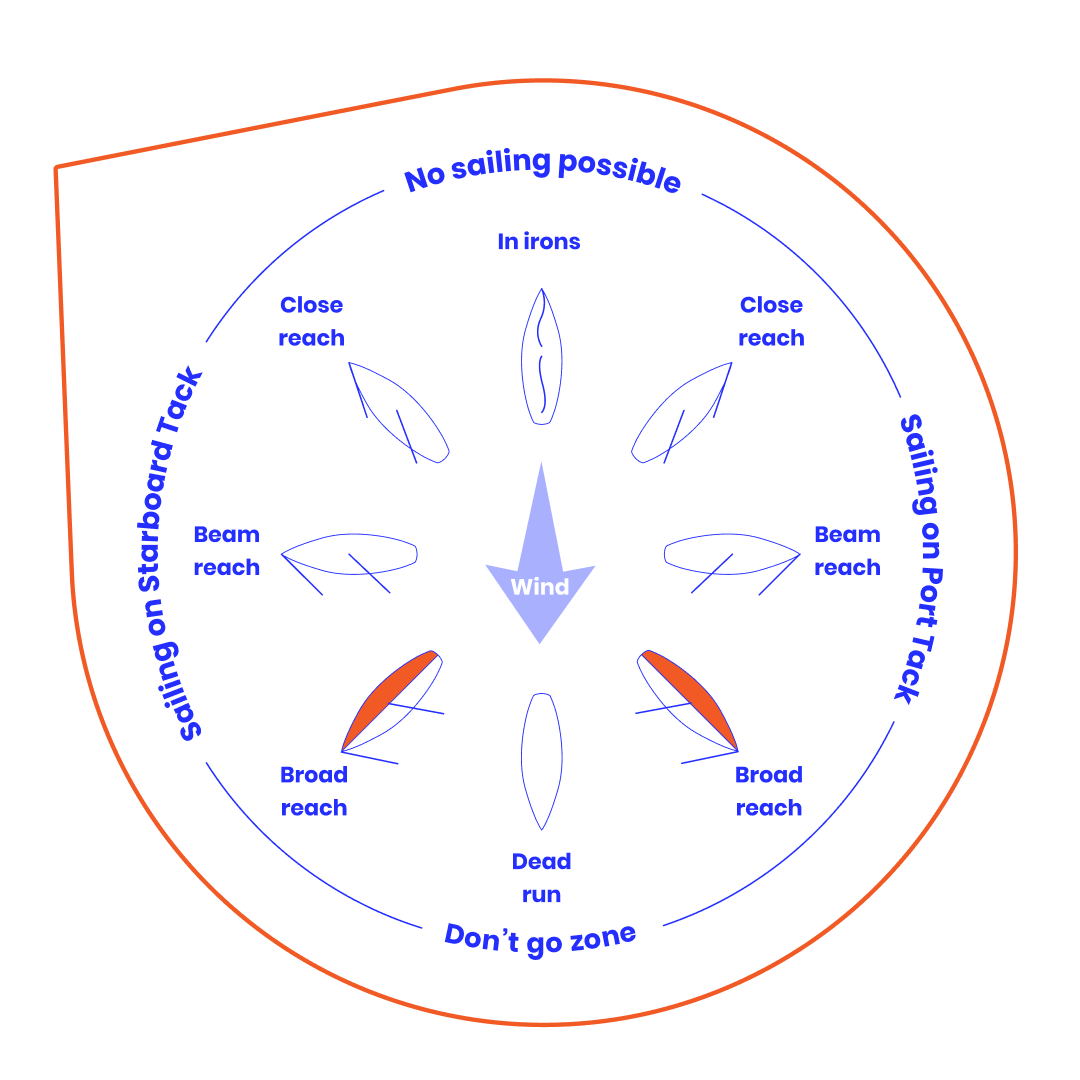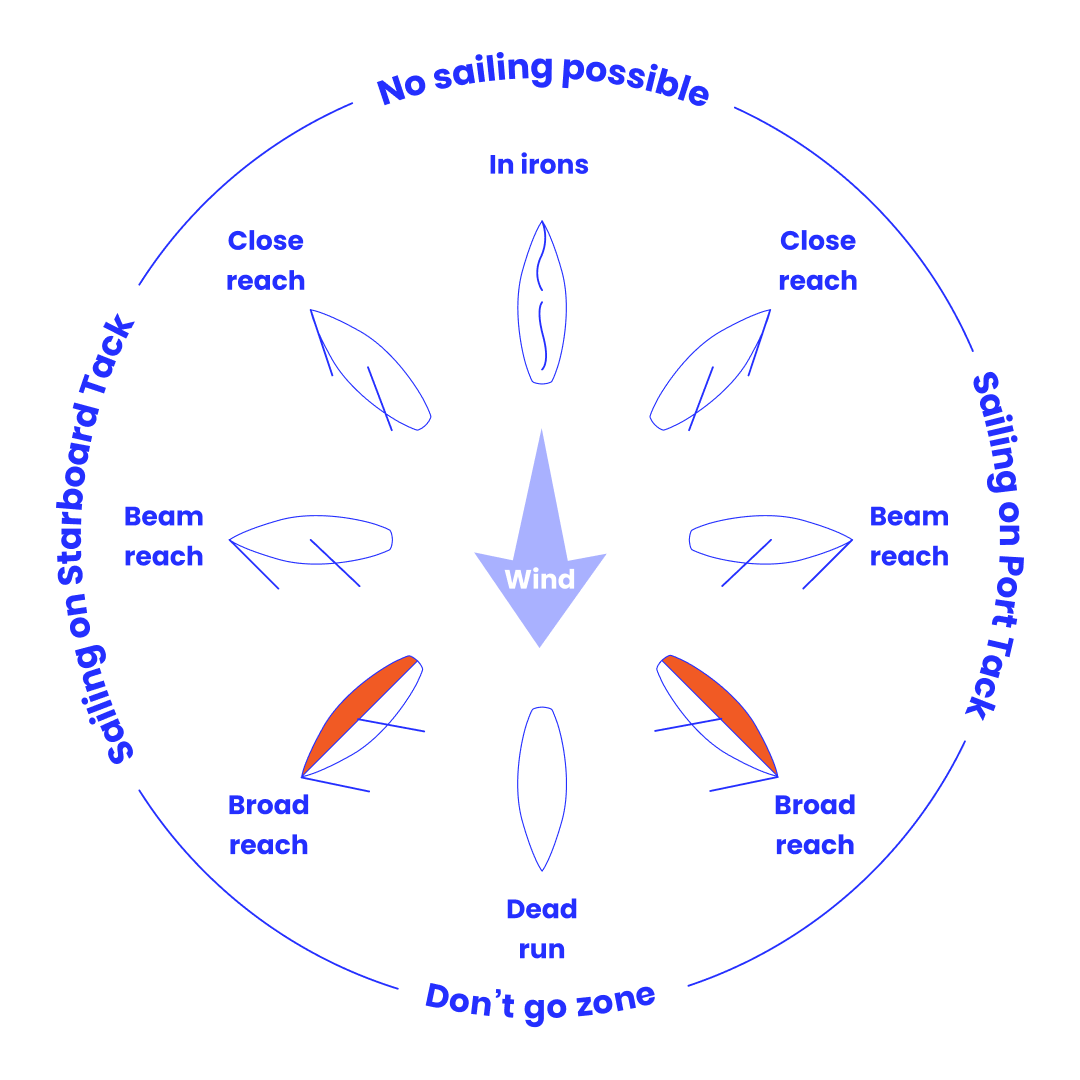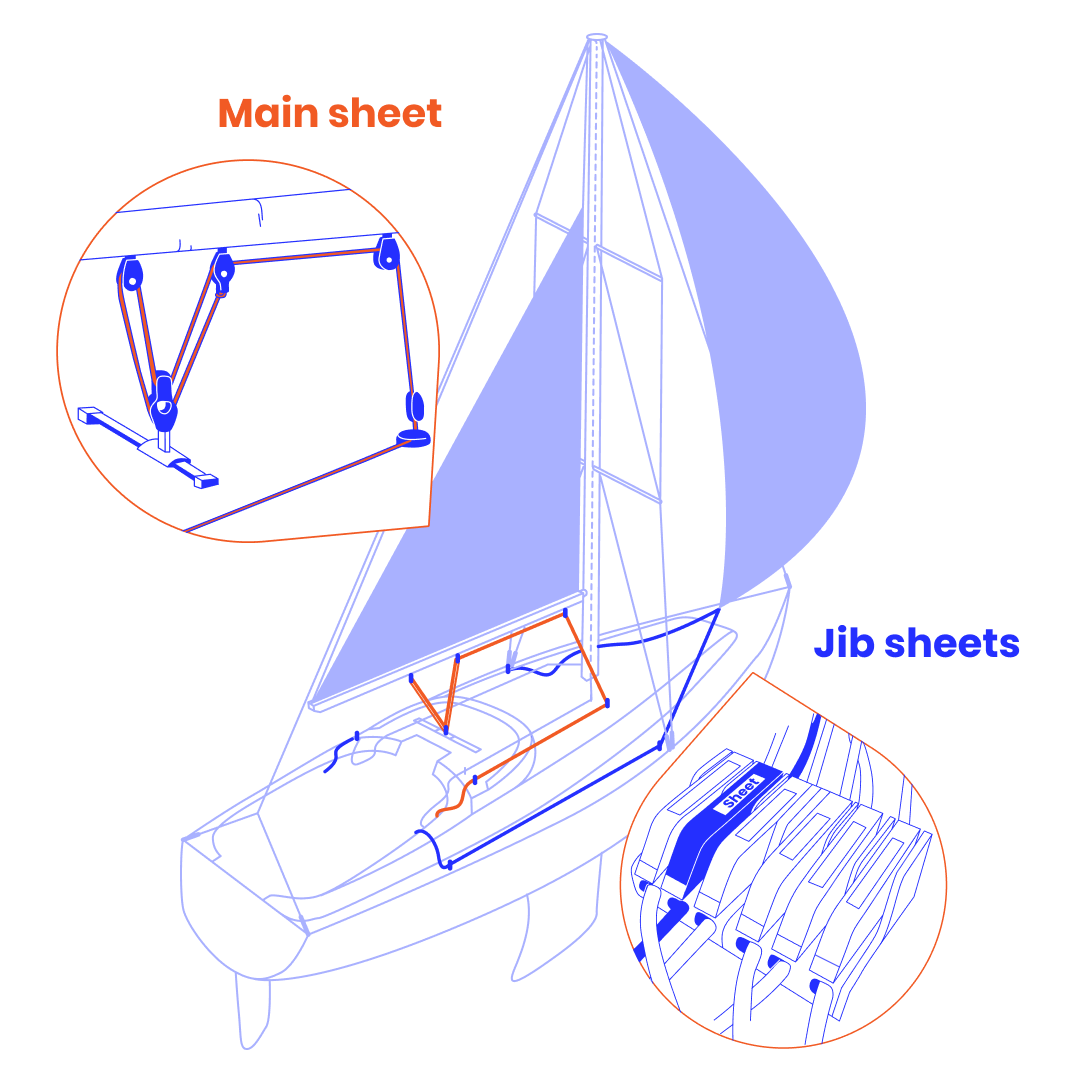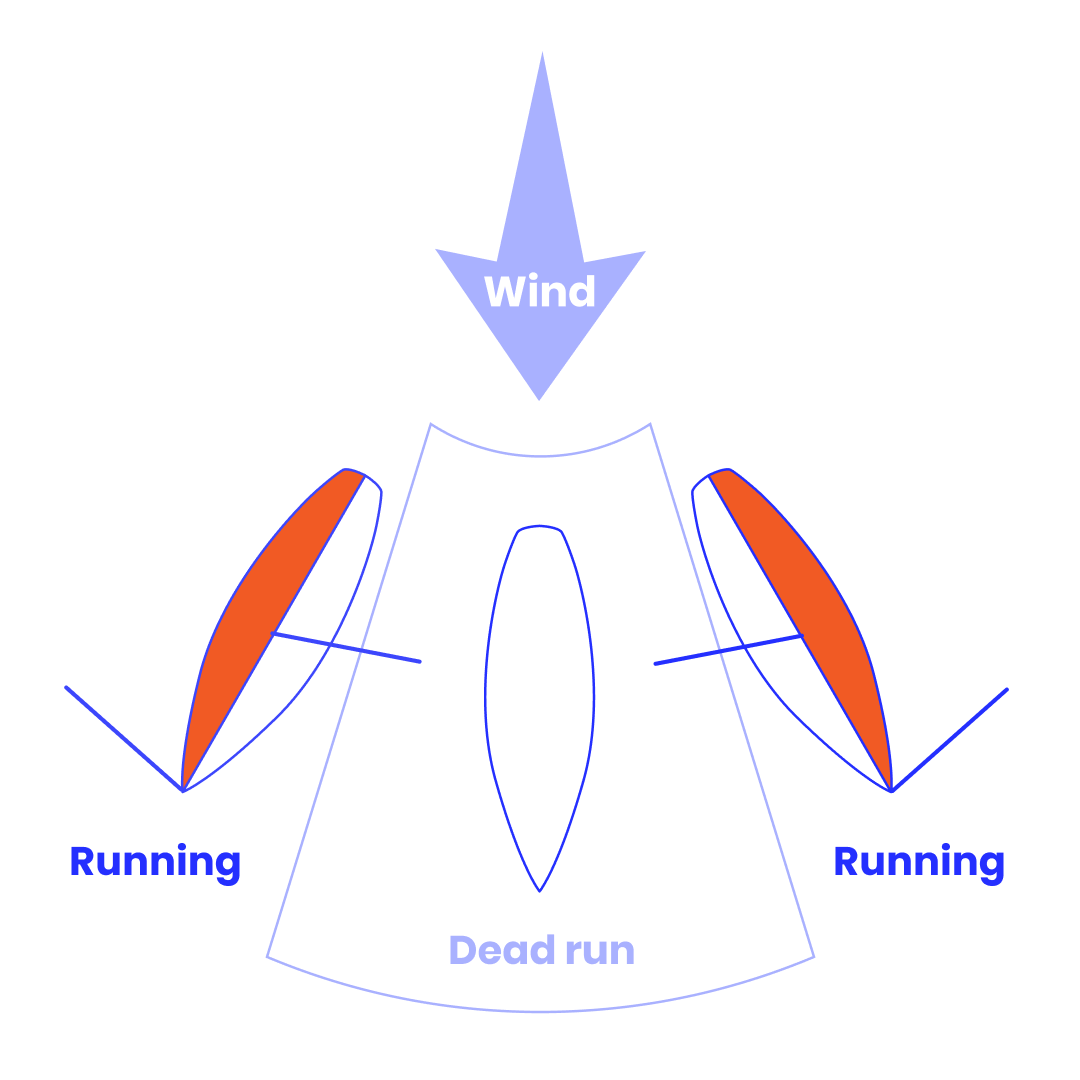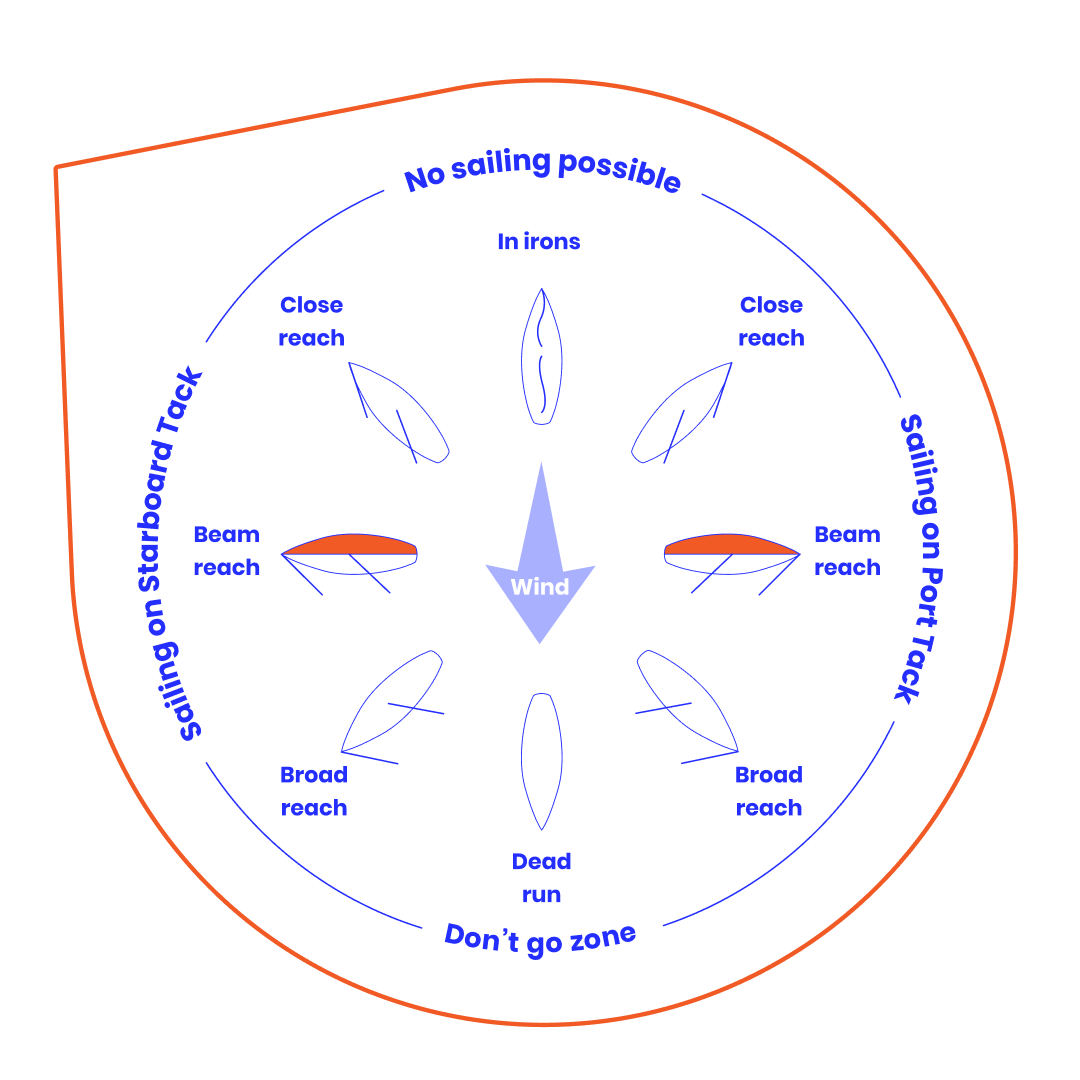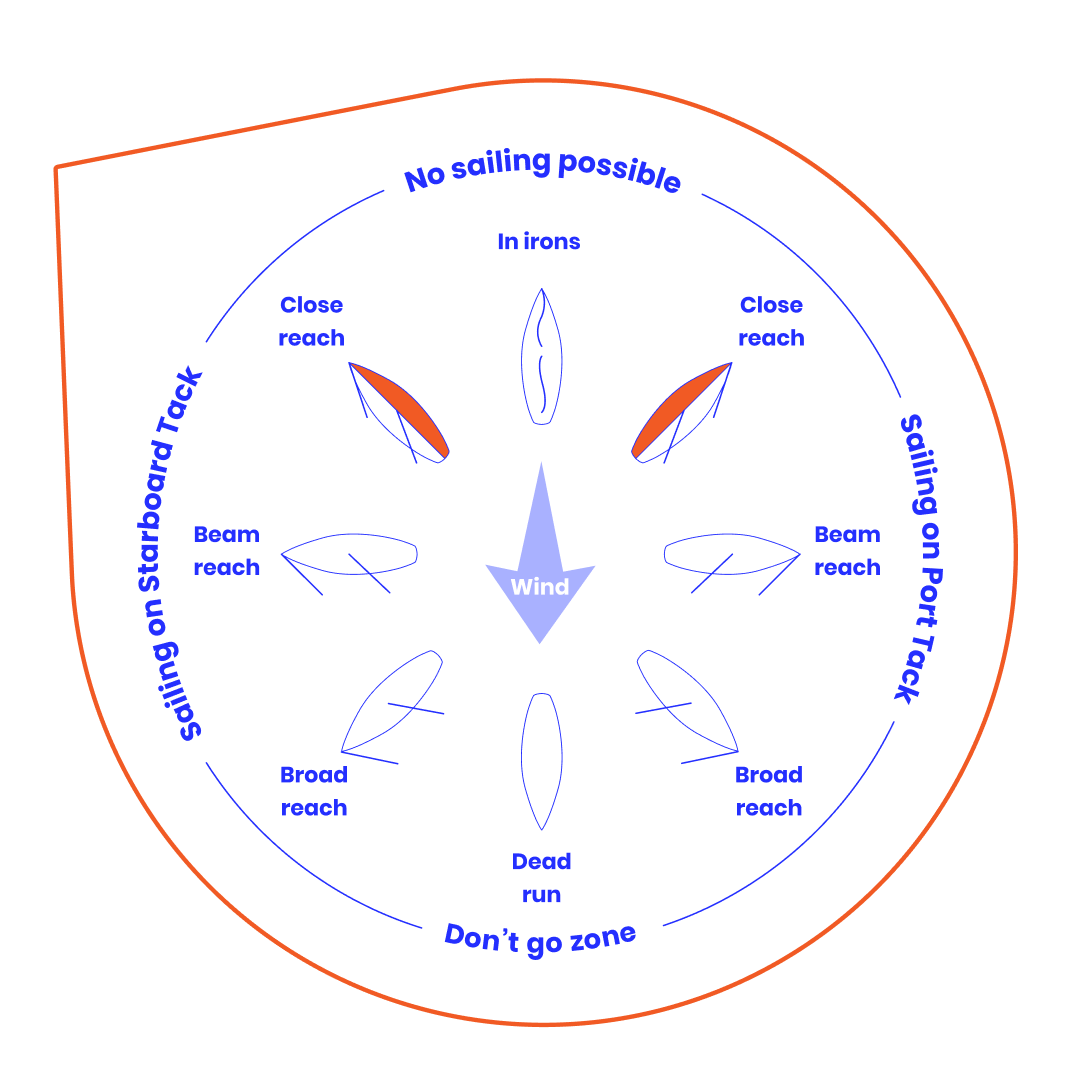Broad Reach vs Running
When the boat is sailing towards the wind, it's called upwind sailing, and when the wind blows from behind the boat, it's known as downwind sailing.
While Broad Reach is downwind sailing at about 120-140 degrees, Running is the next downwind point of sail with the boat’s angle to the wind approaching close to 180 degrees, typically around 140-160 degrees, with the sails fully eased out.
In this position, instead of having both sails on one side of the boat, you can move the jib to the opposite side of the boat to catch as much wind as possible. However, there's a higher risk of sudden and uncontrolled movement of the mainsails, which could cause an accident.
While Running can provide good speed, the more direct wind angle may reduce the aerodynamic lift on the sails, resulting in slightly slower boat speeds compared to Broad Reach sailing. Therefore, Broad Reach sailing is often faster and safer.
